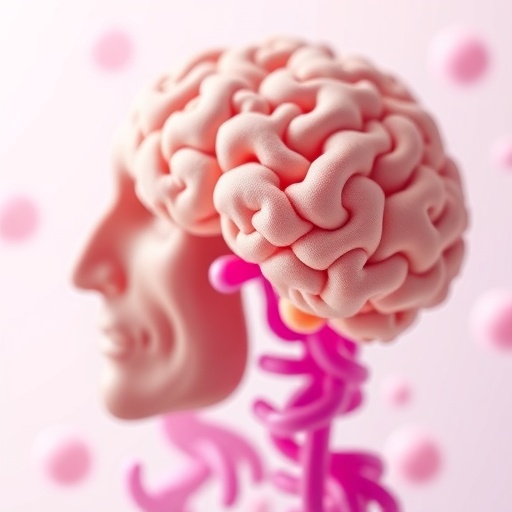A groundbreaking study conducted by scientists at the National Cancer Institute-designated Montefiore Einstein Comprehensive Cancer Center has shed light on the genetic mechanisms behind the elevated risk of leukemia and other hematologic disorders observed among first responders exposed to the toxic environment of the 9/11 World Trade Center disaster site. Published in the prestigious journal Cancer Discovery, this research reveals how environmental toxins can induce specific mutations in blood-forming stem cells, potentially accelerating oncogenic processes and chronic inflammation, with profound implications for public health response to environmental catastrophes.
The collapse of the Twin Towers released an unprecedented cloud of particulate matter containing a cocktail of carcinogens and mutagenic compounds. Approximately 400,000 individuals, including rescue workers and local residents, inhaled or otherwise encountered this hazardous dust. Prior epidemiological data indicated increased cancer rates and cardiovascular disease in this cohort, but precise molecular insights have been lacking. This study fills a critical gap by analyzing high-resolution genetic data from nearly a thousand exposed first responders, comparing them to two control cohorts: unexposed firefighters and a general population sample, all sampled between 2013 and 2015.
Using next-generation sequencing technologies, researchers scrutinized blood samples to detect the presence of clonal hematopoiesis (CH), a condition where a single mutated hematopoietic stem cell clone expands disproportionately in the blood system. While CH is commonly associated with aging and serves as a known precursor state to hematologic malignancies, its link to environmental toxins had not been fully established. The results disclosed a significantly higher prevalence of CH among the exposed first responders relative to controls, delineating a direct relationship between toxic exposure and clonal expansion of mutated progenitor cells.
Detailed mutational profiling revealed that younger individuals under the age of 60 displayed a unique mutational signature divergent from classical age-related CH mutations. This distinction supports the hypothesis that the mutagenic components of the WTC dust not only increase leukemia risk but also potentially accelerate biological aging of the hematopoietic system. The spectrum of mutations suggests that the toxins induce genetic instability through mechanisms distinct from the normal, age-associated mutagenesis, thereby promoting early onset of clonal dominance and malignancy.
Complementing the human genetic findings, the team employed murine models to elucidate the biological consequences of dust exposure on hematopoietic tissues. Exposure to WTC dust particles triggered robust inflammatory responses mediated by elevated levels of the interleukin-1 receptor accessory protein (IL1RAP), a cytokine receptor component known to play a pivotal role in immune signaling and hematopoietic regulation. This inflammatory milieu fostered the expansion of mutated clones, mirroring the increased CH prevalence observed in humans.
Critically, genetic ablation of IL1RAP in the experimental mice curtailed the expansion of these clones, effectively preventing the proliferation of mutant hematopoietic stem cells. This finding identifies IL1RAP as a central molecular driver of toxin-induced clonal hematopoiesis, offering a targetable pathway for therapeutic intervention. IL1RAP inhibitors, some of which are currently undergoing clinical evaluation for other malignancies and autoimmune conditions, could represent a novel modality to mitigate the risks of leukemia and other blood disorders in toxin-exposed populations.
The implications of these findings extend far beyond the WTC disaster. As environmental exposures such as wildfires, urban air pollution, and military burn pits gain increasing recognition for their health hazards, the study establishes a conceptual framework for understanding how inhaled toxins can promote pre-cancerous mutational expansions in hematopoietic tissues. This knowledge paves the way for public health strategies that incorporate genetic screening for CH in populations with known toxic exposures, enabling early identification of high-risk individuals.
Moreover, the authors emphasize that by targeting IL1RAP-mediated inflammatory pathways, it may be possible not only to suppress mutant clone expansion but also to prevent progression to overt leukemia. This approach heralds a preventive paradigm in oncology that interrupts carcinogenesis at its clonal hematopoiesis stage, long before malignant transformation occurs. Such interventions could revolutionize treatment for individuals exposed to environmental carcinogens and reduce cancer incidence in vulnerable groups.
Co-corresponding authors Divij Verma and Ulrich Steidl from Einstein, alongside colleagues David Prezant from FDNY and Michael Savona from Vanderbilt-Ingram Cancer Center, underscore the multidisciplinary nature of this research. The collaboration reflects a translation from epidemiological observation to mechanistic molecular science and preclinical modeling, illustrating the modern approach to understanding complex environmental health challenges.
Supported by a constellation of philanthropic foundations and research societies, including the Leukemia Lymphoma Society and the Edward P. Evans MDS Foundation, the study reiterates the critical importance of sustained funding in uncovering disease pathways triggered by environmental disasters. It also highlights the potential societal benefits of precision medicine approaches tailored to environmental risk factors.
In summary, this scientific investigation unravels the intricate biological interplay between environmental toxins and hematopoietic stem cell mutagenesis, identifying IL1RAP as a key molecular nexus enabling clonal expansion and inflammation that predispose to leukemia. The findings advance our understanding of post-disaster health effects and propose actionable molecular targets, thus carrying profound implications for research, clinical monitoring, and therapeutic innovation in environmental toxicology and cancer prevention.
Subject of Research: People
Article Title: “Elevated clonal hematopoiesis in environmentally exposed 9/11 first responders has distinct age-related patterns and relies on IL1RAP for clonal expansion.”
News Publication Date: October 1, 2025
Image Credits: Albert Einstein College of Medicine
Keywords: Environmental toxicology, Leukemia, Blood cancer, Mutation





